The Great Year & Astrophotography
Additional Information
Related links, images and relevant information involving this howtube video.
» Click here to download the free Stellarium software I'm using in this video.
The old Hermetic axiom "As Above, So Below" has a profound significance on our lives. As we go about our daily lives, down here on Earth, there are larger cycles playing out in the cosmos above. One of these cycles is called "The Great Year", which takes about 25,920 years to complete.
Oddly enough, there seems to be a correlation between the "seasons" of the Great Year, and catastrophes on Earth. This is something Randall Carlson has devoted countless hours to studying and exploring. You can see some of these correlations below: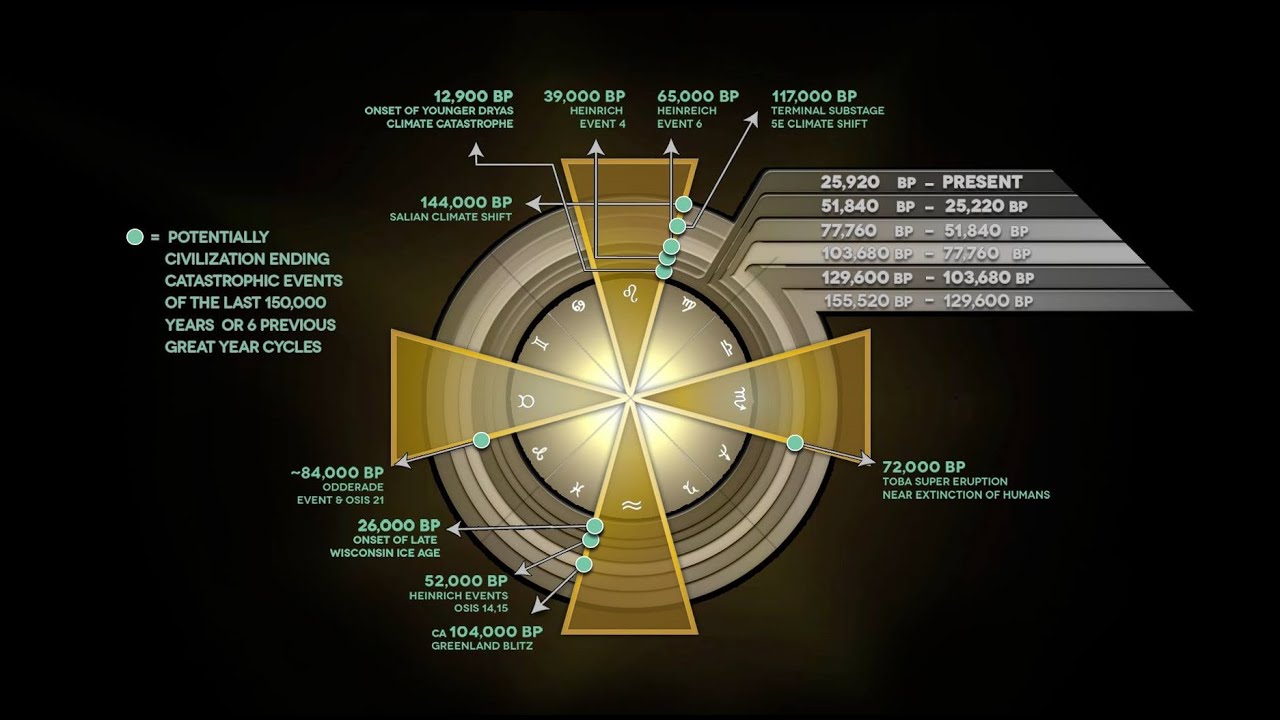
To find the correlation between these events, we have to expand our thinking to a cosmic level. These cosmic events - comets entering the solar system, the sun going through different phases, our solar system orbiting through the Milky Way galaxy, nearby stars going supernova, all have profound impacts down here on Earth. Our ancestors must have witnessed these events, and recorded them in different ways. I found the pictograph below on a canyon wall out in the Utah desert. It seems to show four comets flying through the sky...
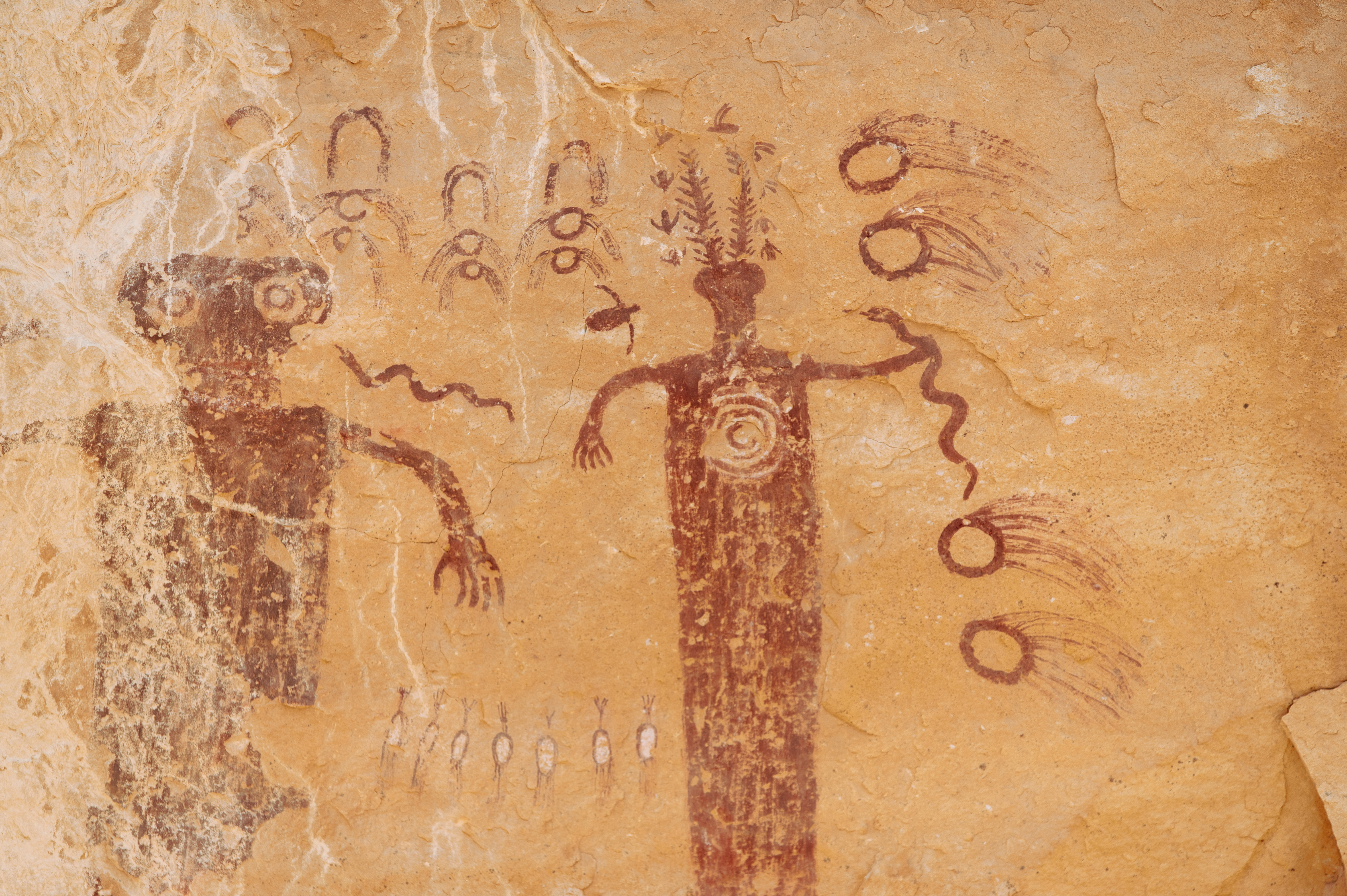
The Milky Way
Another factor to consider is that our view of the night sky changes very slowly over this span of 25,920 years. One of the most obvious changes is the position of the Milky Way overhead. The Milky Way core is currently at its "lowest" position, and will slowly begin rising in the night sky over the next 12,960 years. Our ancestors who were living during the Younger Dryas were seeing a completely different view of the night sky than we are today. For example, I currently live in northern Washington, near the Canadian border. (48 degrees North). If someone was living up here 12,960 years ago, near the southern margin of the Cordilleran Ice Sheet, they would have seen much more of the Milky Way galaxy. In fact, I would have to travel as far south as the equator to see the same amount of the Milky Way overhead. That's close to 5,000 miles!
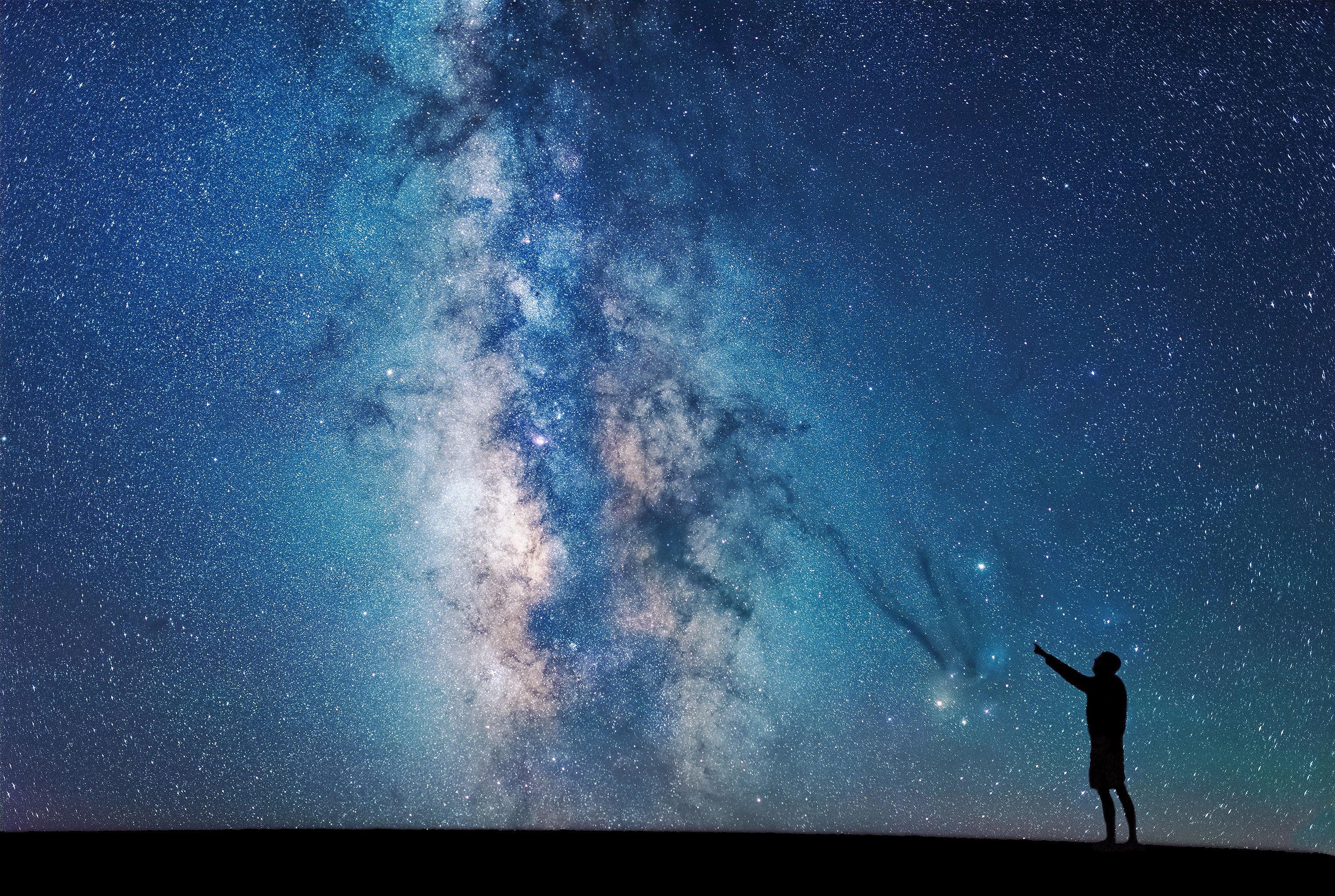
The North Celestial Pole
The North Celestial Pole is the precise spot in the sky where the earth rotates around. From our point of view, this is where all the stars appear to rotate around. You can see this spot in the Star Trails photo below. Over the course of 25,920 years, this Celestial Pole actually moves across the sky. That means the "North Star" will change over time. Our current pole star is appropriately named "Polaris." Since it is located so close to the north celestial pole, it does not appear to move over the course of the night. Once you learn how to identify Polaris, you can navigate easily at night. Our ancestors would've had to use different stars for their night-time travels though. For example, someone living 4,800 years ago would've seen Thuban as the North Star. Our ancestors living 16,540 years ago would've seen Delta Cygni as their North Star.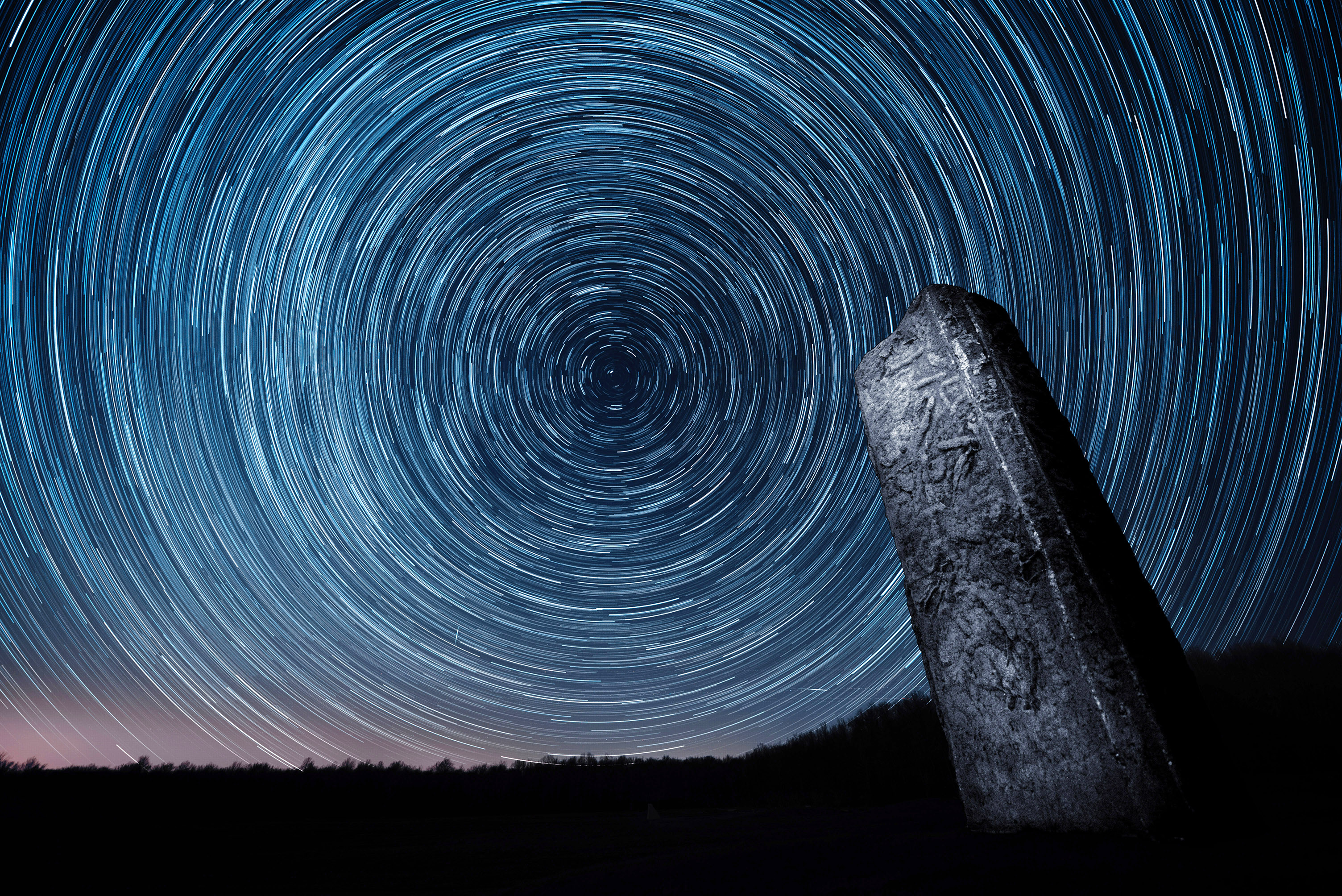
Precession of the Equinoxes
This gets pretty complicated, so I'll try to explain as best I can. As the Earth goes through the Great Year cycle, the sun rises in different zodiacal constellations every 2,160 years. This leads to the various "ages" (Leo, Taurus, Aries, etc...) The sun is slowly transitioning into the constellation of Aquarius, therefore we are currently entering the "Age of Aquarius." We've spent the last ~2,000 years in the "Piscean Age", as the sun rose in the Pisces constellation.
This brings us right back to the start of our discussion today. There seems to be a link between the transition of these various ages and global catastrophes. The current evidence seems to suggest that comets are one of the main culprits. Comets travel through our solar system in elongated elliptical orbits. It's possible that our Earth intersects these orbits at specific times during the Great Year, and we collide with the debris left behind. During the Younger Dryas, 12,900 years ago, we may have even collided with a comet directly, which fragmented into multiple pieces and caused a path of destruction from South America up to the great ice sheets in North America. This must have been an especially large comet, as it seems like we repeatedly ran into fragments of it for many years during the Younger Dryas.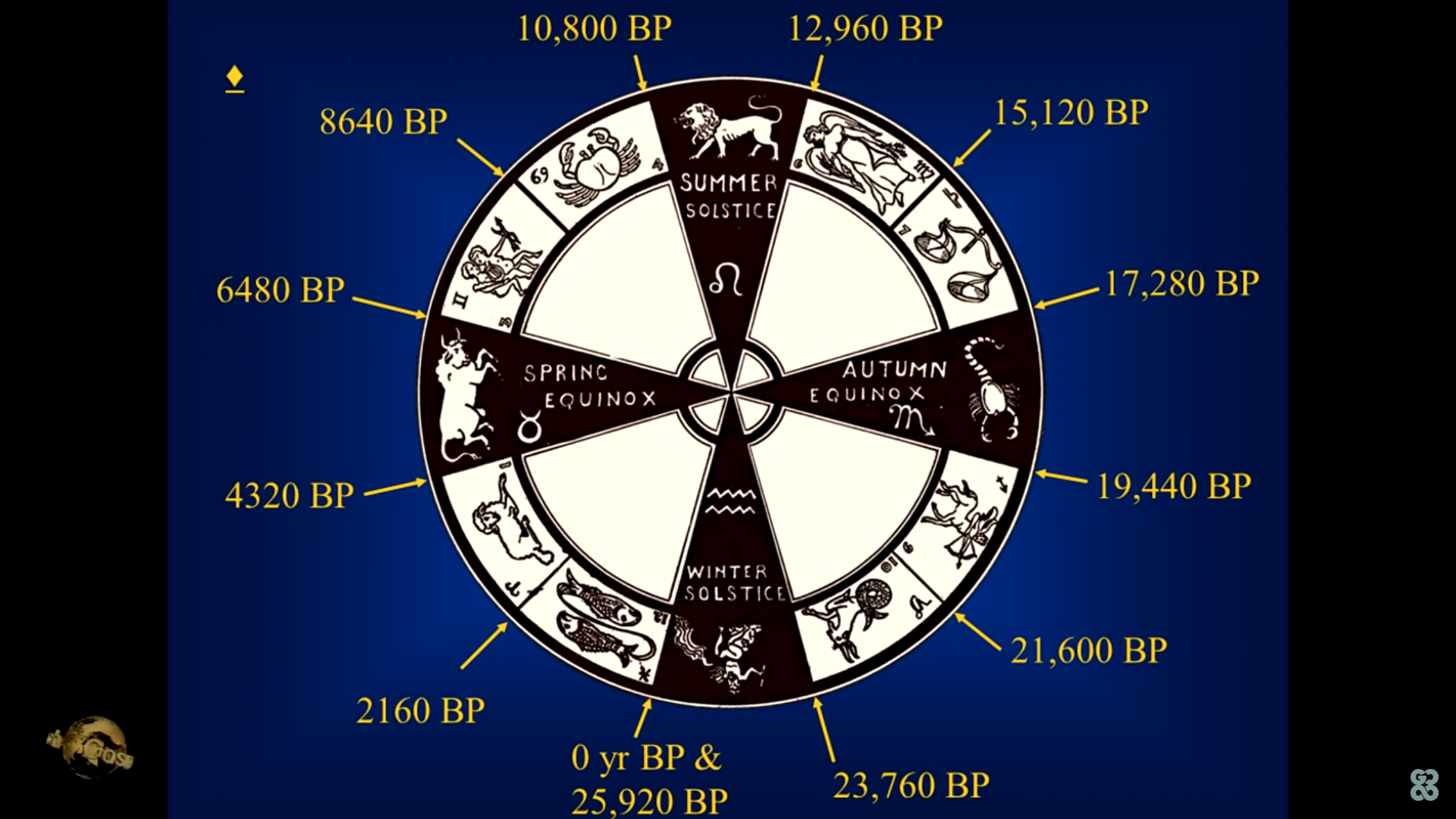
Another factor to consider is the Sun. If the Sun was impacted by dust and debris, or even a large comet itself, it may respond by shooting out a large solar flare. This could have caused immense devastation here on Earth, especially if the Ozone Layer and magnetic field around Earth were recently damaged.
As we expand our viewpoint beyond the solar system, it's possible that we are in a "local cluster" of stars. As our solar system orbits around the Milky Way Galaxy, we could be traveling along with a group of stars. The brightest star in the night sky, Sirius, is located just 8 light years away. That makes the Sirius system one of the closest to our own. Cultures across the planet, throughout time, all have traditions involving Sirius. Some even say that they remember a time when Sirius was red. We know that Sirius B did indeed transition from a Red Giant to its current White Dwarf phase. But it's argued that this would have happened too far in the past to have been observed. If, or when, Sirius B goes supernova it will have devastating consequences for life on Earth. The impact from the nova will not only destabilize the Oort Cloud and Kuiper Belt, sending showers of comets and asteroids into the solar system, it will also destroy the atmosphere here on Earth and cause a mass extinction event.
The Ark
While many of these cataclysmic events would be hard to predict, we do know of one that is guaranteed to occur. Our Sun will eventually expand to a Red Giant star. During this transformation, our planet will be destroyed. At first, the increased heat and output from the Sun will cause the Earth to become a hothouse like Venus. Eventually, if the Sun expands far enough during its red giant phase, our planet may become a desolate waste like Mercury.
Thankfully for us, this is not expected to happen for another few billion years. However, let's assume that the sun was just starting to show signs of a transition to the next phase of its life cycle. We are currently the only lifeforms, that we know of, that can do something preemptively. We would need to develop a plan to leave our solar system and seek refuge in another. This journey could take thousands of years to complete, and would be the biggest undertaking in human history.
Just like the story of Noah and the Flood, we need to seek refuge in an ark when the time comes. This ark would need to sustain life as it travels through the void between star systems, and protect those inside from the multitude of dangers lurking in space.
If we think through this logically, we would first need to develop a highly resistant shell. This shell could be constructed using the same concept as honey bee hives. A hexagon structure provides a superior strength to weight ratio. If the structure is made of very strong elements, like titanium, and organized with a hexagonal design, it should hold up to any impacts. This lightweight, but incredibly resilient outer layer will protect the inhabitants inside.
It would help to have materials readily available to repair any damage to the shell. To ensure we have the materials on-hand, one solution would be to coat the outside of the Ark with a rocky or dusty layer. The composition should include things like: titanium, zirconium, chromium, yttrium, beryllium, silica, etc... Many of these elements could be harvested from nearby passing asteroids, or even a dedicated trip to the asteroid belt. In fact, since our planet is doomed anyway, we might as well strip-mine it for all the precious metals before we leave. Between the vast resources of the Earth's crust, and some other nearby objects in the solar system, we should have enough materials to construct the Ark.
During our adventure through the cosmos, the Ark will encounter lots of space dust. This dust can actually help, as it slowly coats the outside of the Ark and gives us even more materials. We will have multiple impacts with asteroids and meteors, which would leave behind craters on the outside of our dusty shell. However, there would be a hidden benefit here. All of those impacts will deposit important elements that we can use later.
Once we arrive at our new home planet in another solar system, we could utilize these materials from the outer layer of the Ark for terraforming projects. These various elements could help make the planet more habitable for the colonists. Or, worst case scenario, if the new home planet is the victim of a comet or asteroid impact, we could utilize the remaining materials from the Ark to rejuvenate the wasteland.
During our brief time in space over the last few decades, we've learned that gravity is essential to our health. Astronauts have faced rather serious health complications upon returning to Earth, and that's after just a few months of zero-gravity. Imagine thousands of years... Therefore, the Ark needs to generate its own gravity. This would require a lot of mass, which adds some problems to the design and construction. The Ark will need to be quite large...
When designing the Ark, we could also incorporate sacred numbers, to preserve knowledge for future generations. As we've learned today, 25,920 is the "sacred number" for the Great Year. If we divide the Great Year up into 12 "months", that leaves us with 2,160 years per month. Perhaps we could use this as the diameter of the Ark - 2,160 miles. That would make it large enough to comfortably house the internal components required to sustain life for thousands of years. An Ark of this size would also generate its own gravity.
Based on our current understanding, inter-tidal zones were a requirement for life to evolve on Earth. These inter-tidal zones allowed ocean life to slowly adapt above the water, and eventually spread to land. If we position our Ark at just the right spot in-orbit around a planet, we could do the same thing there. We could also seed this planet with life that was stored inside the Ark. Although, it may take some genetic modification to make it compatible with this new planet.
With this in mind, our first goal should be to terraform the new planet to sustain life. This can be done both passively and actively. The passive terraforming would be the simple presence of the Ark, creating the inter-tidal zone and potentially increasing the planet's crustal activities. The active terraforming would include adding elements to the atmosphere and ocean to change the composition. Also, inserting various basic life forms into the ocean to begin creating oxygen. This process could take millions of years to complete...
We'd also need a quick way to move from this Ark down to the planet. If we are space faring civilization that could create this massive ark and move through solar systems, that shouldn't be too hard to figure out. We could also develop some sort of cryogenic technology, like in sci-fi movies, to go into rest periods and use less resources. This may be required as we wait for life to develop on the new planet we've chosen as a home (as well as the travel between solar systems).
Eventually, after thousands or even millions of years, we can restart civilization on our new home world. To make sure that our descendants never forget our cosmic history, we could pass down this story in various ways. Some of these would be incredibly simply, yet effective. Just like the telephone game though, this information will slowly be lost and confused with time. If a series of catastrophes affects our new home world, we could even come close to extinction once again. During these cataclysms, our memory of what came before could be lost. Then we'd have to start over again, as children, with no knowledge of our incredible past...
If Humanity is able to mature enough in the next few decades, and centuries, then all of this is entirely possible. We could set out on a grand adventure into space, and bring life to new worlds. Maybe that is our destiny...
_6234d37f80176.jpg)
Comments
Comment on this video
Make a Donation
Support this channel with a recurring or one-time donation




mindblazer
Jun 1, 2022